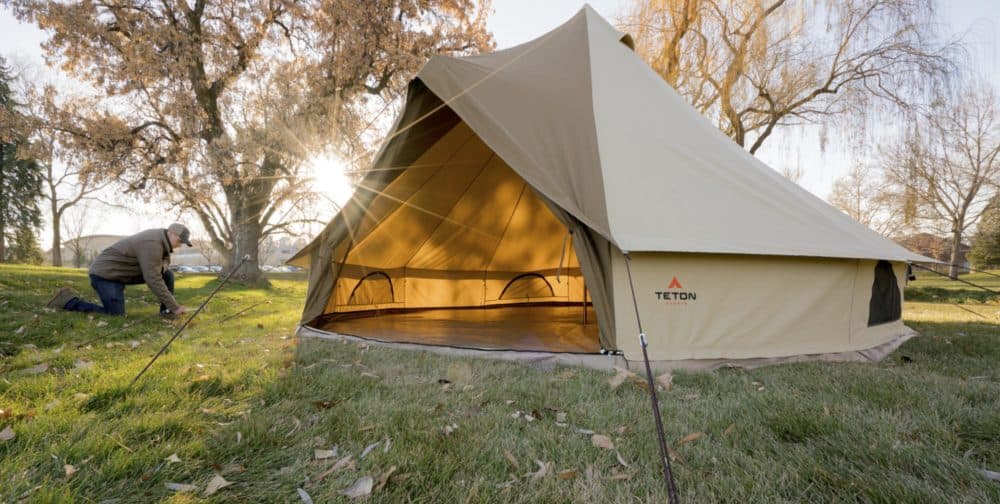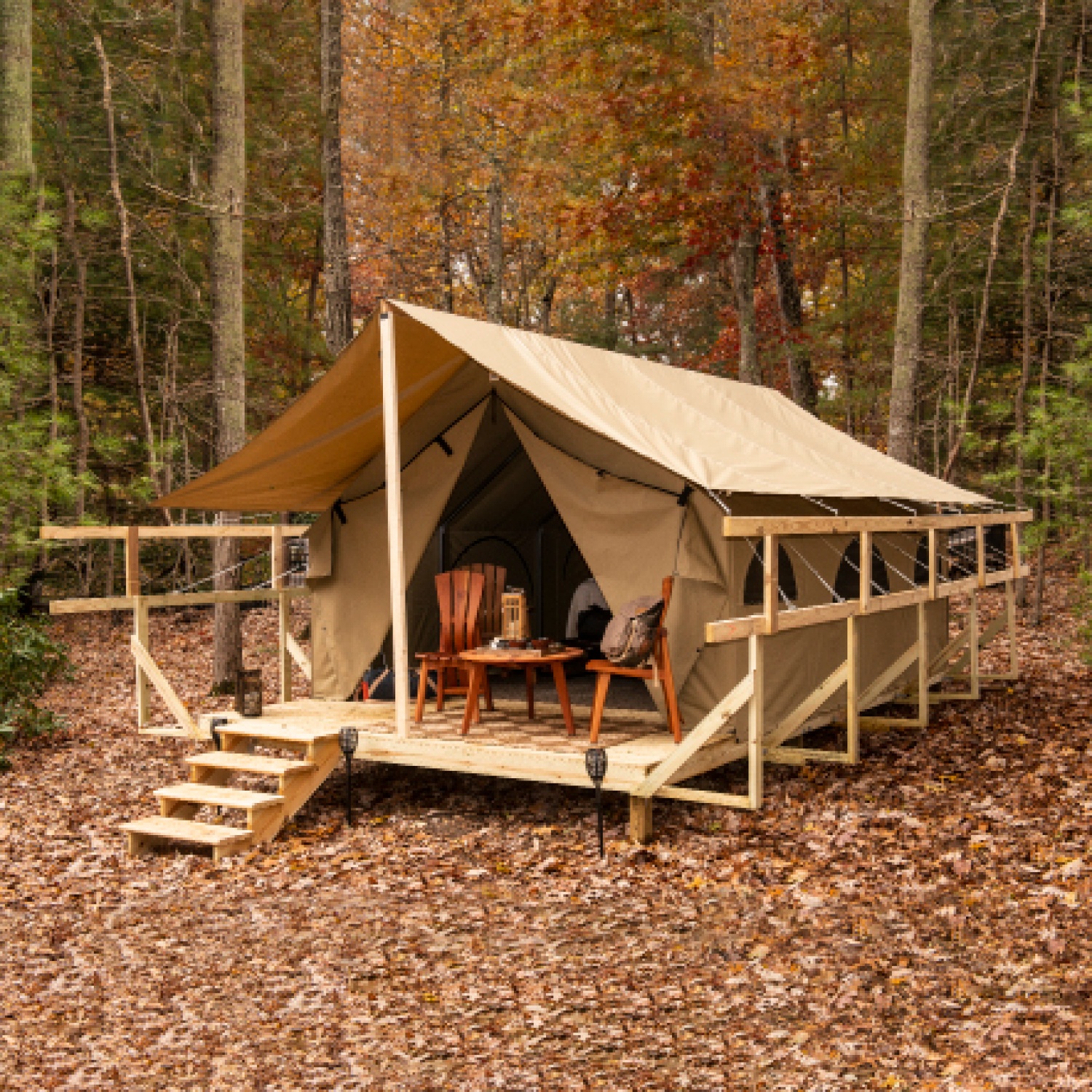I. Introduction to Permanent Tents

A. Overview of the Concept and Benefits of Permanent Tents
Permanent tents are durable, long-lasting structures that provide a range of benefits. They offer a permanent outdoor shelter solution that can be utilized for various purposes, such as camping, glamping, events, or even as a semi-permanent living space. Permanent tents provide a comfortable and versatile space for outdoor enthusiasts and those seeking a unique outdoor experience.
B. Understanding the Purpose and Applications of Permanent Tent Structures
Permanent tents can serve a variety of purposes, including extended camping trips, outdoor events, or even as a permanent living space. They can be used by individuals, families, or businesses to create a comfortable and functional outdoor environment.
C. Exploring the Advantages of Long-lasting Outdoor Shelters
Permanent tents offer a range of benefits, such as durability, weather resistance, and versatility. They provide a reliable and long-lasting outdoor shelter that can withstand various weather conditions and offer a comfortable space for extended periods of time.
II. Selecting the Right Location for a Permanent Tent
A. Identifying Suitable Locations for Setting Up a Permanent Tent

- Exploring Factors such as Ground Conditions and Accessibility
Select a location with suitable ground conditions, such as flat and stable terrain. Consider accessibility for transporting materials and supplies to the site.
- Highlighting Environmental Considerations for Tent Placement
Consider environmental factors such as wind direction, exposure to sunlight, and proximity to water sources. These factors can impact the comfort and functionality of the permanent tent structure.
B. Obtaining Permits and Adhering to Local Regulations
- Understanding Permit Requirements and Zoning Restrictions
Research local regulations and permit requirements for setting up a permanent tent. Some areas may have specific guidelines regarding land use, structure size, and safety considerations.
- Exploring Legal Considerations for Establishing a Permanent Tent
Consult with local authorities to ensure compliance with building codes, zoning regulations, and any necessary permits or licenses required for a permanent tent structure.
III. Design and Construction of Permanent Tents
A. Choosing the Appropriate Tent Design and Style
- Identifying Different Tent Designs for Specific Purposes
Select a tent design that suits the intended purpose of the structure. Consider factors such as size, shape, and layout options to meet functional and aesthetic requirements.
- Exploring Aesthetics and Functionality in Permanent Tent Designs
Balance aesthetics and functionality in the design, considering elements such as windows for natural light, ventilation systems for airflow, and layout options for optimal space utilization.
B. Construction Materials and Durability
- Highlighting Materials that Ensure Longevity and Weather Resistance
Choose durable, weather-resistant materials such as heavy-duty canvas, reinforced PVC, or other suitable fabrics that can withstand the elements and provide long-lasting protection.
- Exploring Construction Techniques for Stable and Strong Tent Structures
Ensure proper construction techniques, including sturdy framing, secure anchoring, and proper tensioning of the tent fabric. This ensures stability and structural integrity of the permanent tent.
IV. Utilities and Amenities in Permanent Tents
A. Electricity and Lighting Systems
- Exploring Options for Electrical Connections and Lighting Fixtures
Consider electrical installations for lighting, charging devices, and other electrical needs. Consult with professionals to ensure safe and proper electrical connections.
- Identifying Safety Measures for Electrical Installations
Adhere to safety regulations and guidelines when installing electrical systems. Use appropriate wiring, circuit breakers, and grounding to ensure electrical safety within the permanent tent structure.
B. Plumbing and Sanitation Facilities

- Highlighting Options for Water Supply and Waste Management
Consider plumbing options for water supply and waste management within or near the permanent tent. Explore options such as portable water tanks, greywater systems, or composting toilets to meet sanitation needs.
- Exploring Amenities for Hygiene and Comfort in Permanent Tents
Include amenities such as showers, sinks, and toilets to enhance hygiene and comfort within the permanent tent structure. Choose fixtures and materials that are suitable for outdoor use and easy to maintain.
V. Furnishing and Customization of Permanent Tents
A. Interior Design and Layout
- Tips for Efficient Use of Space and Comfortable Arrangement
Plan the interior layout to maximize space utilization and ensure comfortable living or functional areas within the permanent tent. Consider furniture placement, storage solutions, and traffic flow for optimal use of the space.
- Exploring Furniture and Storage Solutions for Permanent Tents
Select appropriate furniture and storage solutions that are durable, functional, and suitable for outdoor use. Consider options such as folding furniture, multi-functional pieces, and storage containers to optimize space.
B. Personalization and Aesthetic Enhancements
- Highlighting Options for Customizing and Beautifying Permanent Tents
Personalize the permanent tent structure with decorative elements such as rugs, curtains, artwork, or plants. Consider incorporating personal touches to create a unique and inviting space.
- Identifying Decorative Elements and Creative Touches
Explore various decorative elements and creative touches to enhance the aesthetic appeal of the permanent tent. Consider elements such as lighting fixtures, wall hangings, or outdoor seating areas to create a welcoming and personalized atmosphere.
VI. Maintenance and Upkeep of Permanent Tents

A. Regular Cleaning and Inspection
- Tips for Cleaning and Maintaining the Exterior and Interior of Tents
Regularly clean the exterior and interior of the tent structure to remove dirt, debris, and potential mold or mildew. Inspect the fabric and structural components for any signs of damage or wear.
- Identifying Signs of Wear and Tear for Timely Repairs
Identify signs of wear and tear, such as tears in the fabric, loose or damaged hardware, or compromised structural integrity of the permanent tent. Address these issues promptly to prevent further damage and ensure the longevity of the structure.
B. Seasonal Maintenance and Weatherproofing
- Highlighting Seasonal Preparations and Maintenance Routines
Perform seasonal maintenance routines, such as inspecting the tent before and after extreme weather conditions, tightening hardware, and checking for any potential leaks or vulnerabilities. Make necessary repairs or adjustments to ensure the tent remains weatherproof.
- Exploring Techniques to Ensure Weather Resistance and Longevity
Apply weatherproofing treatments to the tent fabric and structural components to enhance their resistance to water, UV rays, and other environmental factors. This helps protect the permanent tent from damage and extends its lifespan.
Permanent tents offer a durable and comfortable outdoor shelter solution. By selecting the right location, designing and constructing a sturdy tent, and considering utilities and amenities, you can create a long-lasting and functional space. Furnishing and customizing the tent add personal touches and enhance the overall experience. Regular maintenance and upkeep ensure the tent remains in optimal condition for years to come. Whether for personal use or commercial purposes, permanent tents provide a reliable and convenient outdoor accommodation option.
